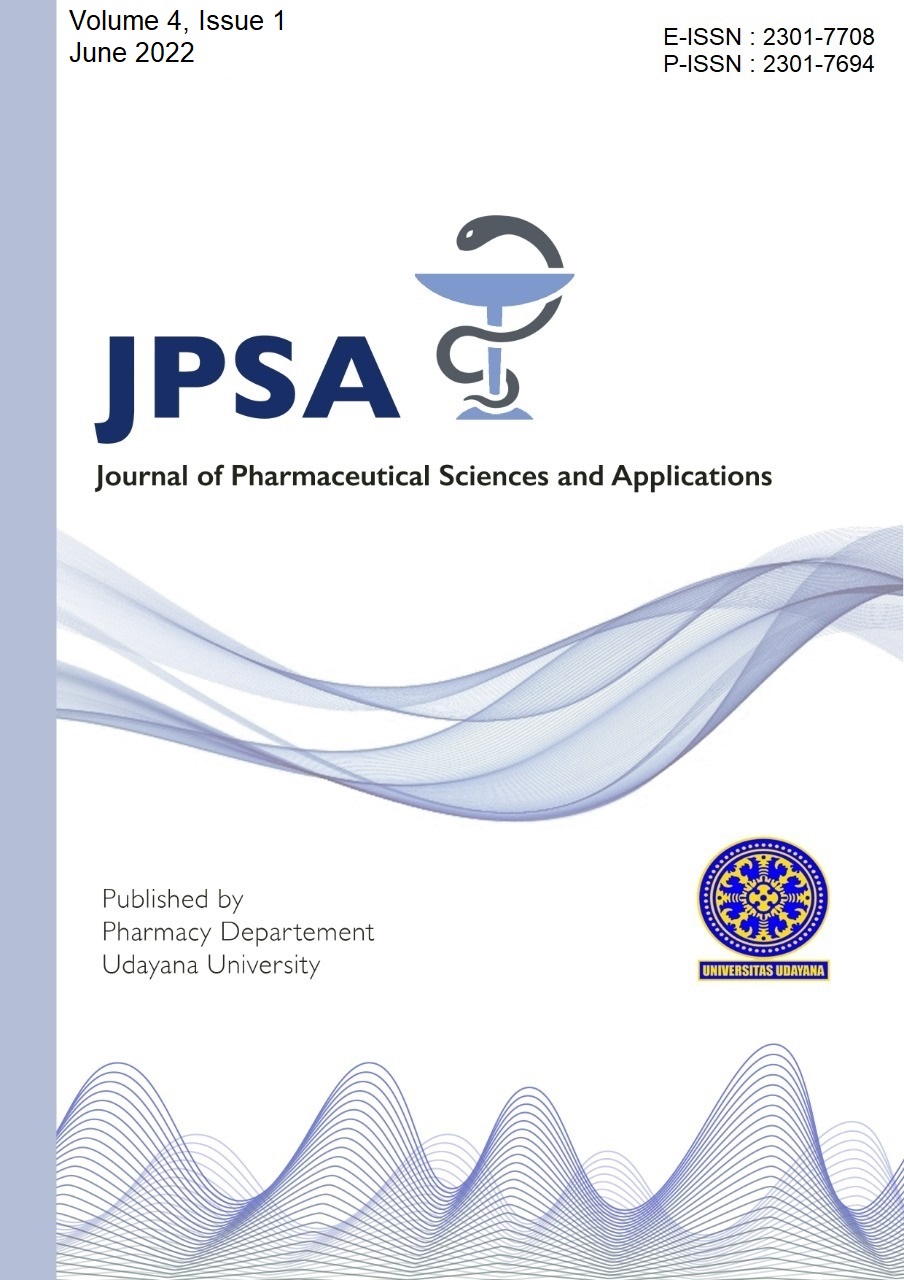ANTI-INFLAMMATORY ACTIVITY OF PEGAGAN LEAVES (Centella asiatica (L.) Urban) EXTRACT CREAM
Abstract
Background: Pegagan leaves (Centella asiatica (L.) Urban) is an herbal plant family of Apiaceae containing the active ingredients of the triterpenoid group glycosides (asiaticoside, Asiatic acid, madekasat acid, madikassosida) centelloside, flavonoids, and Asiatic acids. Inflammation is a complex reaction in tissues that involves a response to blood vessels and leukocytes. Objective: The purpose of this study was to find out the anti-inflammatory activity that occurs in the legs of mice in the form of preparation of pegagan extract cream (Centella asiatica (L.) Urban). Methods: Pegagan extract is done by the maceration method that uses ethanol 70%. Test animals used to squeak white males as much as 10 heads with a body weight of 20-30 grams. Animals test were divided into 5 treatment groups, namely the pegagan extract group with a dose of 2 g/kg BB; 4 g/kg BB; 6 g/kg BB, positive control (Betason cream 0.1%), and negative control (pegagan extract 2 g/kg BB). 1 hour before treatment of squeaky soles is inducted with a 1% carrageenan solution subplantarically. Results: Measurement of edema volume on the soles of the feet of mice is observed every 1 hour for 6 hours. The results showed that pegagan extract cream with a dose of 6 g / kg BB showed the maximum percentage of inhibition edema that is at the 6 hours with a result of 80,2%. The results of the data analysis of the percentage of inhibition of Centella asiatica extract from the treatment group Negative Control-Formula II and Negative Control-Formula III showed significant differences (p<0.05). Conclusion: Pegagan leaves extract has an anti-inflammatory effect on the feet of mice.
Keywords: Anti-inflammatory, Pegagan leaves, Centella asiatica (L.) Urban
Downloads

This work is licensed under a Creative Commons Attribution 4.0 International License.
Authors who publish with this journal agree to the following terms:
Authors retain copyright and grant the journal right of first publication with the work simultaneously licensed under a Creative Commons Attribution License that allows others to share the work with an acknowledgment of the work's authorship and initial publication in this journal.
Authors are able to enter into separate, additional contractual arrangements for the non-exclusive distribution of the journal's published version of the work (e.g., post it to an institutional repository or publish it in a book), with an acknowledgment of its initial publication in this journal.
Authors are permitted and encouraged to post their work online (e.g., in institutional repositories or on their website) prior to and during the submission process, as it can lead to productive exchanges, as well as earlier and greater citation of published work. (See The Effect of Open Access).

This work is licensed under a Creative Commons Attribution 4.0 International License.


 HOME
HOME
















